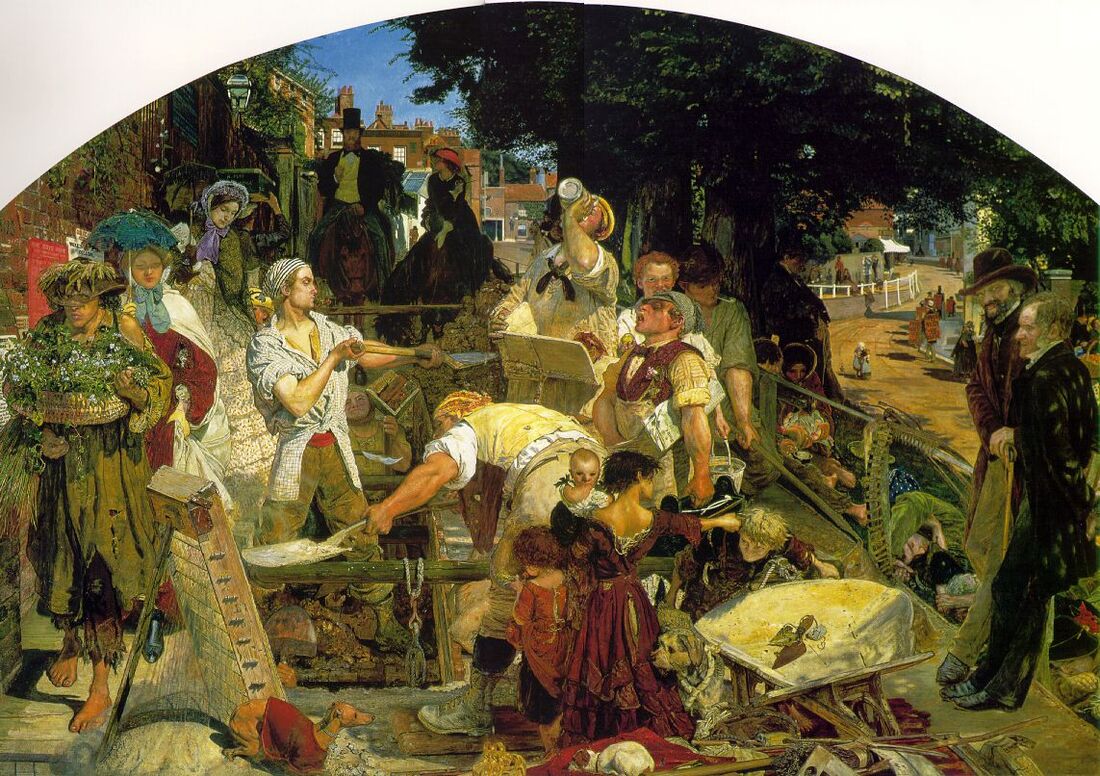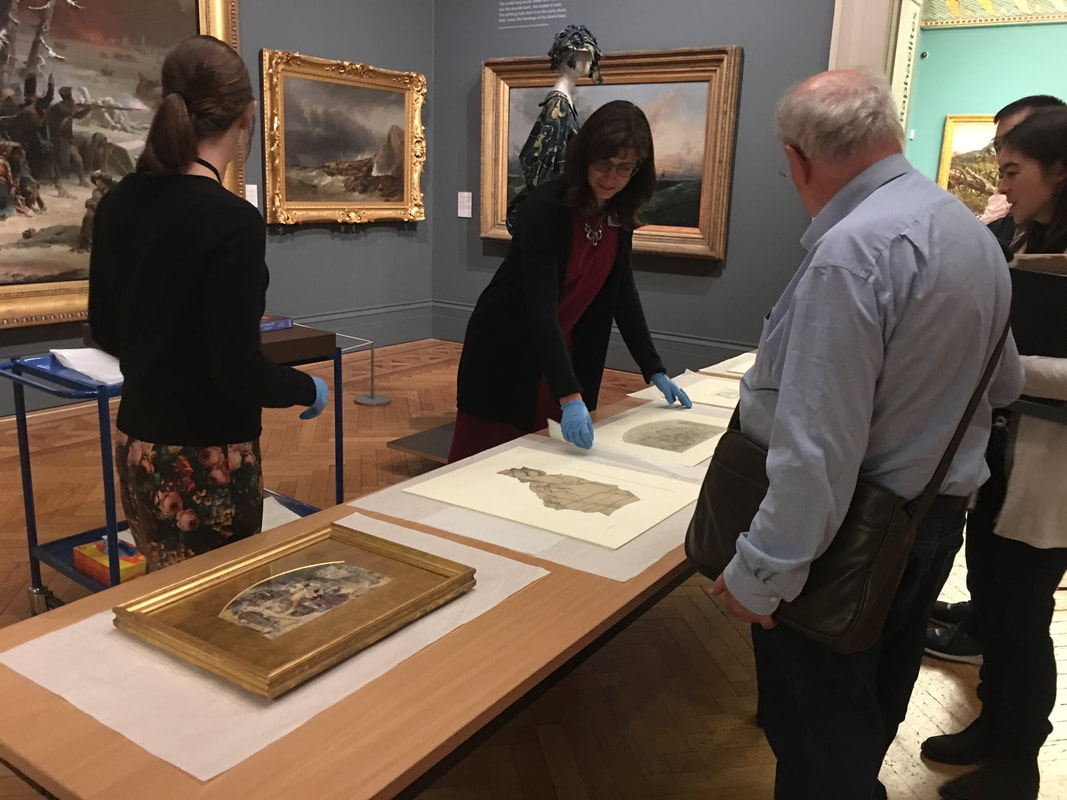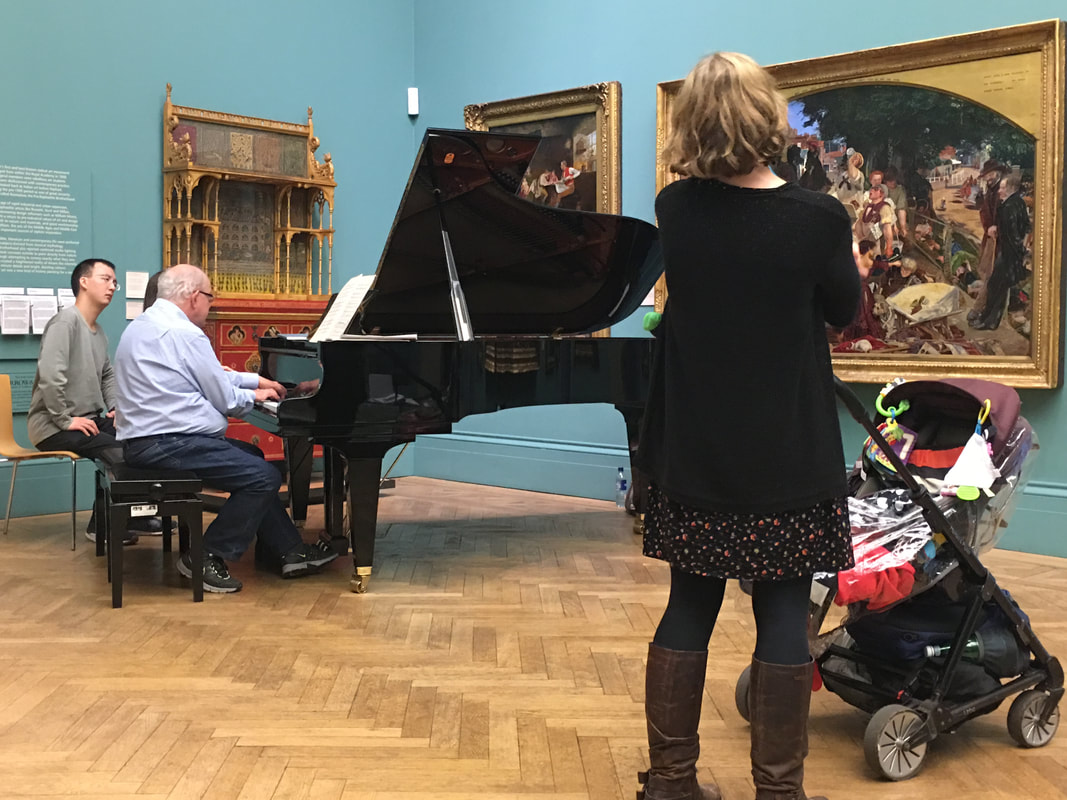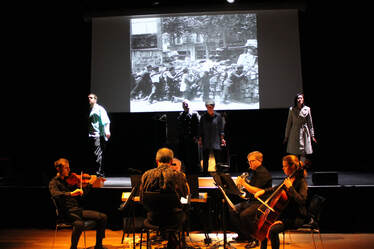|
It was thrilling to be able to attend the first performance of my Aspects of Work in the Pre-Raphaelite Gallery of Manchester Art Gallery where Ford Madox Brown's famous panorama of Victorian life is beautifully displayed. Translating a picture, especially one as far reaching as this, into another art form seems an unlikely task: music can make a good attempt at capturing the mood of a painting - but ‘Work” is a complex and compressed panorama of Victorian life, and interpreting all that in musical terms was going to be a challenge. The realism of “Work” is typical of the Pre Raphaelites (of whose brotherhood Brown was never actually a member) with their immense attention to detail. “Work” took 10 or more years to create. I was attracted to the very idea that Brown was also celebrating his own labour of love, a delight in an achievement that is hand made and crafted with great skill and care, hard toil, patience and perseverance. Brown’s inspiration were the writings of Thomas Carlyle who held work to be a sort of religion: man perfects himself while working. “Consider how, even in the meanest sorts of labour, the whole soul of man is composed into a kind of real harmony, the instant he sets himself to work!’ The picture reminds me of many an Old Masterpiece, (Brown received his training in the Lowlands); it’s like one of those dramatic scenes from mythology or the Bible, populated by characters ranging from angels and cherubs through to kings, prophets and gods. Brown’s genius was to populate his painting with ordinary folk engaged in everyday occupations in a contemporary setting, like in a Dickens novel. Another influence for Brown at this time were the social commentaries of Hogarth, pictures which are full of drama. “Work” is more than a snapshot of a street scene: there’s an epic drama unfolding before us. The great musical model that I had in mind while writing this piece were the countless arrangements for piano duet that were made in the nineteenth century; arrangements of the symphonic repertory, from Haydn, Mozart and Schubert through to Beethoven, Brahms, Mendelssohn and Schumann. Playing these was a major part of my musical education. These arrangements were originally made to help satisfy the demands of domestic music making - every Victorian drawing room had a piano but comparatively few had access to orchestral concerts - and two competent players could attempt an arrangement of a symphony and play it together effectively, whereas a solo performer would have needed to be more virtuosically advanced. So there is almost an illusion at play here: the intimate medium of a piano duo can hint at something larger than the sum of its parts - like those orchestral arrangements I played as a teenager. So, from the start, I aimed to portray the ‘bigger’ picture: the enormity of the labour, the toil, the industry, the workhouses, the poor laws, the death rates, the starvation - and also the vision, the intellectual energy, the designers, architects, builders, even the financiers who put up the money. The picture was completed in 1865, the same year as Bazalgette’s sewers were inaugurated in London. The industry at the centre of the painting might be the digging of one of these drains under the street. Bazalgette’s achievements are remarkable: this mammoth undertaking had a huge modernising effect on London life. Every part of the project was personally overseen by him. He worked out the minimum diameter of the sewer drains in order to cater for the maximum envisaged demand. But he then doubled that diameter to cater for the ‘unforeseen’. This ‘unforeseen’ turned out to be the population density of the capital 150 years later - the system is still coping. So this was something else I wanted to try and express - the visionary nature of the works that the Victorians undertook, which would have repercussions for generations to come So, for the finale I realised I had to write a fugue, a device traditionally employed by composers at moments of great intensity. It celebrates a composer’s skill since it will contain lots of musical twists and turns which require great concentration on the part of the audience. It requires even more skill from the performers and this can give a fugue great entertainment value.
1 Comment
|
Edward LambertComposer and musician Categories
All
Archives
July 2024
|
|
Scores available by means of a Performance Restricted license from IMSLP
The Music Troupe
|
Contact Us |



 RSS Feed
RSS Feed
